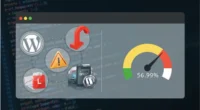Table of Contents
In today’s world, data science isn’t just a buzzword; it’s the heart of how successful businesses make smart choices. Whether it’s predicting customer behavior, improving operations, or creating new products, data science helps leaders turn raw information into real results. But how does this actually happen? Let’s break it down in a way anyone can understand.
What Is Data Science in Simple Words?
Data science is the process of collecting, cleaning, and analyzing data to find patterns and make predictions. Think of it as using math, statistics, and computer tools to understand what’s happening in a business and what might happen next. It turns confusing numbers into helpful insights.
Imagine a coffee shop owner who wants to know which drinks sell best in winter or what promotions bring in more people. By analyzing past sales data, a data scientist could help the owner adjust pricing, schedule staff better, or launch the perfect holiday campaign.
Why Data Science Matters to Businesses?
Today, companies collect a lot of data from websites, customer reviews, social media, sales, and even supply chains. But without knowing how to use this data, it’s just noise. Data science turns this noise into direction.
Key Benefits:
- Better decisions: Leaders no longer guess; they use data to guide actions.
- Faster problem-solving: Patterns in data can reveal issues before they grow.
- Improved customer experience: Businesses learn what customers like and tailor services accordingly.
- Higher efficiency: Data science finds ways to save time and reduce waste.
According to a McKinsey report, businesses that embrace data-driven strategies can see profit gains of up to 20% compared to those that don’t. The message is clear, data is now a critical business asset.
How Data Science Works in Real Business Scenarios?
Let’s look at how data science is being used in everyday business situations.
1. Understanding Customers Better
Retail companies like Amazon use data science to track your browsing, buying history, and search terms. This helps them recommend products you’re more likely to buy. It’s not magic, it’s simply clever math and pattern recognition working in the background.
2. Pricing and Sales Optimization
Grocery chains analyze sales data by location, time, and even weather. When a storm is on the way, stores can prepare by stocking up on key items. Anticipating demand like this helps cut down on waste and increase profits.
3. Improving Operations
Manufacturers rely on sensors and data to anticipate when equipment might break down. This means fewer delays and lower repair costs. Airlines also use similar systems to keep planes running smoothly.
4. Targeted Marketing
Social media platforms help companies use user behavior to create highly personalized ads. With data science, businesses spend less money showing ads to the wrong people.
5. Product Development
Data science helps companies know what people want, even before customers ask for it. Netflix, for example, uses viewing data to create shows that match what users enjoy watching.
How Businesses Start Using Data Science?
Many people think only big tech companies can afford data science teams. But that’s no longer true. Even small and medium businesses are finding affordable ways to use data tools.
Getting Started:
- Collect the right data: Use tools like Google Analytics, CRM systems, or even spreadsheets.
- Hire or train talent: Some businesses hire freelance data analysts. Others upskill their team through online courses.
- Use easy tools: Platforms like Power BI, Tableau, or Google Data Studio allow non-programmers to visualize and understand their data.
- Focus on one problem at a time: Instead of trying to fix everything, start with a clear goal, like reducing customer churn or increasing repeat sales.
Challenges to Watch Out For
While data science offers huge benefits, there are also some common challenges.
- Poor data quality: If your data is wrong or outdated, your insights will be too.
- Lack of strategy: Without clear goals, data efforts can become confusing and wasteful.
- Privacy concerns: Collecting customer data requires careful handling to stay ethical and legal.
- Talent shortage: Not every company has access to skilled data scientists, though this is changing with better tools and training.
The Future: Data-Driven Cultures
By 2025, experts say most successful companies will be fully “data-driven.” That means decisions at all levels, from marketing to product design, will rely on real-time analytics.
But more than just tools, it’s about mindset. Leaders must create a culture where data is valued and used wisely. This means:
- Encouraging teams to ask questions and use evidence.
- Training staff in basic data skills.
- Investing in modern tools and cloud-based platforms.
A Gartner report suggests that data literacy will become as important as computer literacy was in the early 2000s. In other words, knowing how to read and use data will be essential for almost every job.
A Quick Recap
Here’s how data science is transforming business strategy, step by step:
| Transformation Area | Impact |
| Decision-making | Faster, smarter, fact-based choices |
| Customer experience | Personal, timely, and more engaging |
| Marketing & Sales | Targeted offers and better campaign results |
| Operations & logistics | Smoother workflows and cost savings |
| Innovation & development | Data-driven product ideas and improvements |
Conclusion
Data science is not just for big tech or academic researchers. It’s for every business that wants to grow, compete, and stay relevant. With the right tools and mindset, any organization can turn its data into decisions that make a difference.
If you’re new to this field, start small, analyze customer feedback, sales patterns, or website traffic. The insights you gain could be the first step to smarter business strategies.









